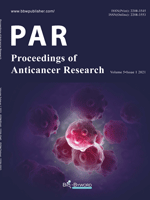Abstract
Premature ovarian failure (POF) refers to the failure of ovaries which causes amenorrhea before the age of 40. It is characterized by primary or secondary amenorrhea along with elevated blood gonadotropin levels and decreased estrogen levels with varying degrees of low estrogen symptoms such as hot flashes and sweating, facial flushing, reduced libido, and so on. Premature ovarian failure (POF) is a common endocrine disease in gynecology. The incidence of POF is increasing year by year and the affected population increasingly involves the younger-aged groups. Its etiology is complex and diverse involving many factors such as genetics, immunity, medical treatment, environment endocrine disruptors, etc. It is also affected by long-term smoking, alcohol intake, and other behaviors which damage patients’ physical and mental health. In recent years, the effects of gene therapy in restoring ovarian function and improving fertility in animal experiments have provided a new direction for POF patients. This article discusses the etiology and possible pathogenesis of POF and BRCA from various aspects as well as summarizes the recent research status and progress of new treatment methods of POF.
References
De Pedro M, Otero B, Martin B, 2015, Fertility Preservation and Breast Cancer: A Review. Ecancermedicalscience, 9: 503.
Rasool S, Shah D, 2017, Fertility with Early Reduction of Ovarian Reserve: The Last Straw that Breaks the Camel’s Back. Fertil Res Pract, 3: 15.
Tugrul Ayanoglu B, Ozdemir ED, et al., 2018, Diminished Ovarian Reserve in Patients with Psoriasis. Taiwan J Obstet Gynecol, 57(2): 227-30.
Shandley LM, Fothergill A, Spencer JB, et al., 2018, Impact of Cancer Treatment on Risk of Infertility and Diminished Ovarian Reserve in Women with Polycystic Ovary Syndrome. Fertil Steril, 109(3): 516-25.
Morin SJ, Patounakis G, Juneau CR, et al., 2018, Diminished Ovarian Reserve and Poor Response to Stimulation in Patients < 38 Years Old: A Quantitative but Not Qualitative Reduction in Performance. Hum Reprod.
Youssef MA, van Wely M, Mochtar M, et al., 2018, Low Dosing of Gonadotropins in In Vitro Fertilization Cycles for Women with Poor Ovarian Reserve: Systematic Review and Meta-Analysis. Fertil Steril, 109(2): 289-301.
Knittel G, Rehkamper T, Nieper P, et al., 2018, DNA Damage Pathways and B-cell lymphomagenesis. Curr Opin Hematol, 25(4): 315-22.
de Kat AC, Broekmans FJ, Laven JS, et al., 2015, Anti-Mullerian Hormone as a Marker of Ovarian Reserve in Relation to Cardio-Metabolic Health: A Narrative Review. Maturitas, 80(3): 251-7.
Wang ET, Pisarska MD, Bresee C, et al., 2014, BRCA1 Germline Mutations may be Associated with Reduced Ovarian Reserve. Fertil Steril, 102(6): 1723-8.
Babayev E, Wang T, Szigeti-Buck K, et al., 2016, Reproductive Aging is Associated with Changes in Oocyte Mitochondrial Dynamics, Function, and MtDNA Quantity. Maturitas, 93: 121-30.
Wang ZW, Ma XS, Ma JY, et al., 2013, Laser Microbeam-Induced DNA Damage Inhibits Cell Division in Fertilized Eggs and Early Embryos. Cell Cycle, 12(20): 3336-44.
Jia ZZ, Zhang JW, Zhou D, et al., 2019, Deltamethrin Exposure Induces Oxidative Stress and Affects Meiotic Maturation in Mouse Oocyte. Chemosphere, 223: 704-13.
Kusakabe H, Tateno H, 2011, Characterization of Chromosomal Damage Accumulated in Freeze-Dried Mouse Spermatozoa Preserved Under Ambient and Heat Stress Conditions. Mutagenesis, 26(3): 447-53.
Garcia-Higuera I, Taniguchi T, Ganesan S, et al., 2001, Interaction of the Fanconi Anemia Proteins and BRCA1 in a Common Pathway. Mol Cell, 7(2): 249-62.
Brosh RM, Jr., Bellani M, Liu Y, et al., 2017, Fanconi Anemia: A DNA Repair Disorder Characterized by Accelerated Decline of the Hematopoietic Stem Cell Compartment and Other Features of Aging. Ageing Res Rev, 33: 67-75.
Garcia-Muse T, Boulton SJ, 2005, Distinct Modes of ATR Activation After Replication Stress and DNA Double-Strand Breaks in Caenorhabditis Elegans. EMBO J, 24(24): 4345-55.
Oktay K, Kim JY, Barad D, et al., 2010, Association of BRCA1 Mutations with Occult Primary Ovarian Insufficiency: A Possible Explanation for the Link Between Infertility and Breast/Ovarian Cancer Risks. J Clin Oncol, 28(2): 240-4.
Lin W, Titus S, Moy F, et al., 2017, Ovarian Aging in Women with BRCA Germline Mutations. J Clin Endocrinol Metab, 102(10): 3839-47.
Oktay K, Harvey BE, Loren AW, 2018, Fertility Preservation in Patients with Cancer: ASCO Clinical Practice Guideline Update Summary. J Oncol Pract, 14(6):381-5.
Qin FZ, Chen Z, 2019, BRCA2 in Ovarian Development and Function. New Engl J Med, (380): 1086-7.
Lee JH, Mand MR, Kao CH, et al., 2018, ATM directs DNA Damage Responses and Proteostasis Via Genetically Separable Pathways. Sci Signal, 11(512).
Shen SX, Weaver Z, Xu X, et al., 1998, A Targeted Disruption of the Murine BRCA1 Gene Causes Gamma-Irradiation Hypersensitivity and Genetic Instability. Oncogene, 17(24): 3115-24.
Huber LJ, Yang TW, Sarkisian CJ, et al., 2001, Impaired DNA Damage Response in Cells Expressing an Exon 11-Deleted Murine BRCA1 Variant that Localizes to Nuclear Foci. Mol Cell Biol, 21(12): 4005-15.
